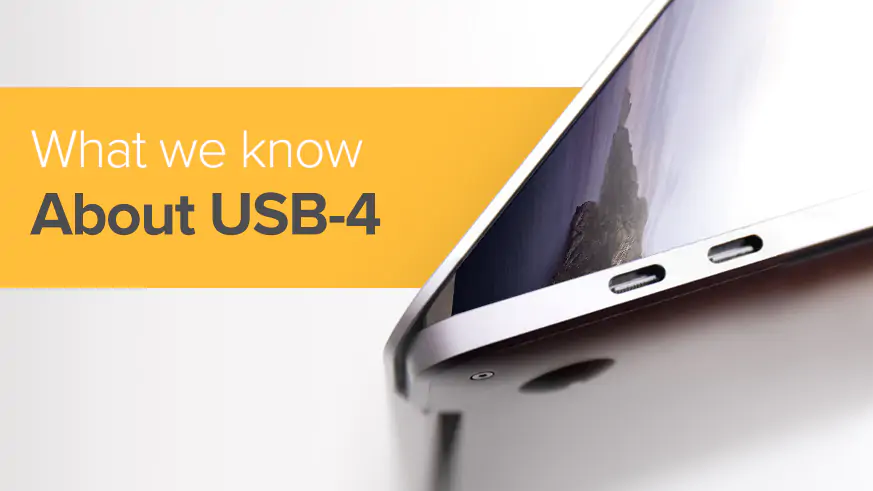The new standard of connectivity, USB4 has been published and is scheduled to release either late this year or in the beginning of next year.
As per the briefings, the USB 4 will transfer data much faster, it will be compatible with Thunderbolt 3 and would work with multiple current standards.
From its updates in speed and improved display connections, here’s what you need to know about the upcoming release of USB4
The most important change with regards to USB4 is undoubtedly its speed. As compared to the previous release, USB4 provides double the speed of 40Gbps, which was only possible with Thunderbolt 3 technology.
It would also not hamper the latest type of the power delivery mode, USB4 will operate over the type C connectors. This works well for the users, as all the recent standards currently only work on Type-C. Within the type C, if you connect a Type-A 3.1 port by using an adapter, the speed and the power will drop down to adjust to the lower denominator.
One more impressive factor of USB4 is the bandwidth sharing ability between its video and data. When you are performing both the tasks simultaneously of sending the data and video both over the same connection, it automatically adjusts the resources available and divides them. For example, with this USB4 having 40 Gbps, you have connected its output to a 4K display device while transferring files from an external source, assuming that the video requires around 10.5 Gbps, then the USB4 will use the remaining 29.5 Gbps for your backup drive.
Even though the maximum speed attained by USB4 is 40 Gbps, this device operates over a range of three different speeds of 10 Gbps, 20 Gbps and 40 Gbps. While operating the less-expensive, smaller devices lower speed units are used and it operates on its maximum speed when a much larger device, such as a laptop is connected.
The USB power delivery can provide up to 100 watts but charging devices do not always support that amount of power. The USB4 port would follow the specifications, but there is no assurance that it would give or take the amount that a particular notebook would require to operate.
The best thing about these generations of USB is the way they function together. In spite of being the latest advancement, they are still compatible with the older USB configurations. This USB4 will work with USB 3 and USB 2 devices while being backward compatible to them, it would support slow data transfer when connected to USB 3.2 or a USB 2, however resume to its 40 Gbps speed when the new USB 4 backup drive is connected.
With all the favourable pointers that we see for the USB4, the only hurdle it brings to its manufacturers is its cost, as it requires more expensive components that the standard USB 3.2, otherwise the release of USB4 is something we could really look forward to in the connectivity domain.

 JAPAN
JAPAN USA
USA Canada
Canada Australia
Australia New Zealand
New Zealand UK
UK Europe
Europe India
India Singapore
Singapore UAE
UAE Login
Login